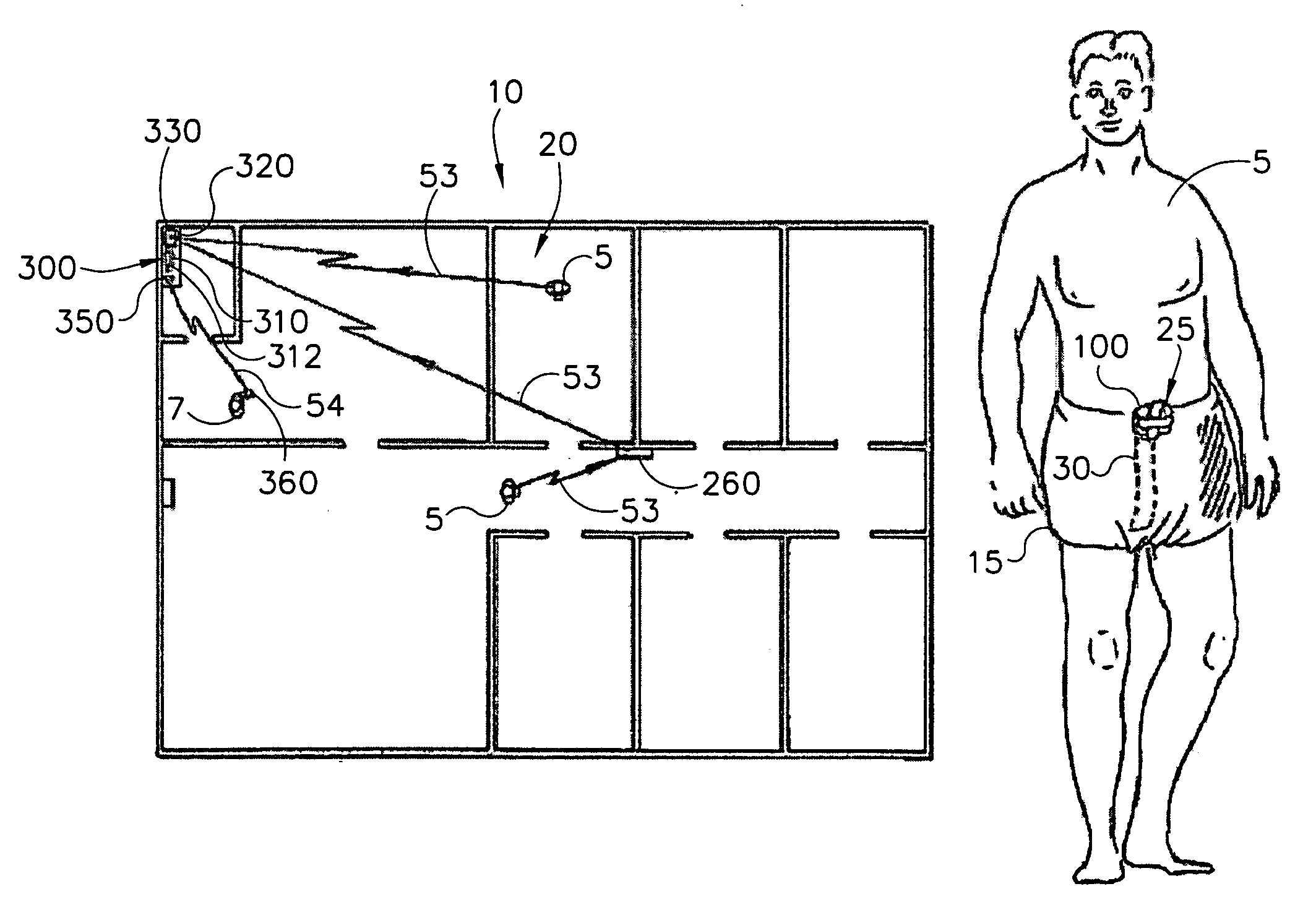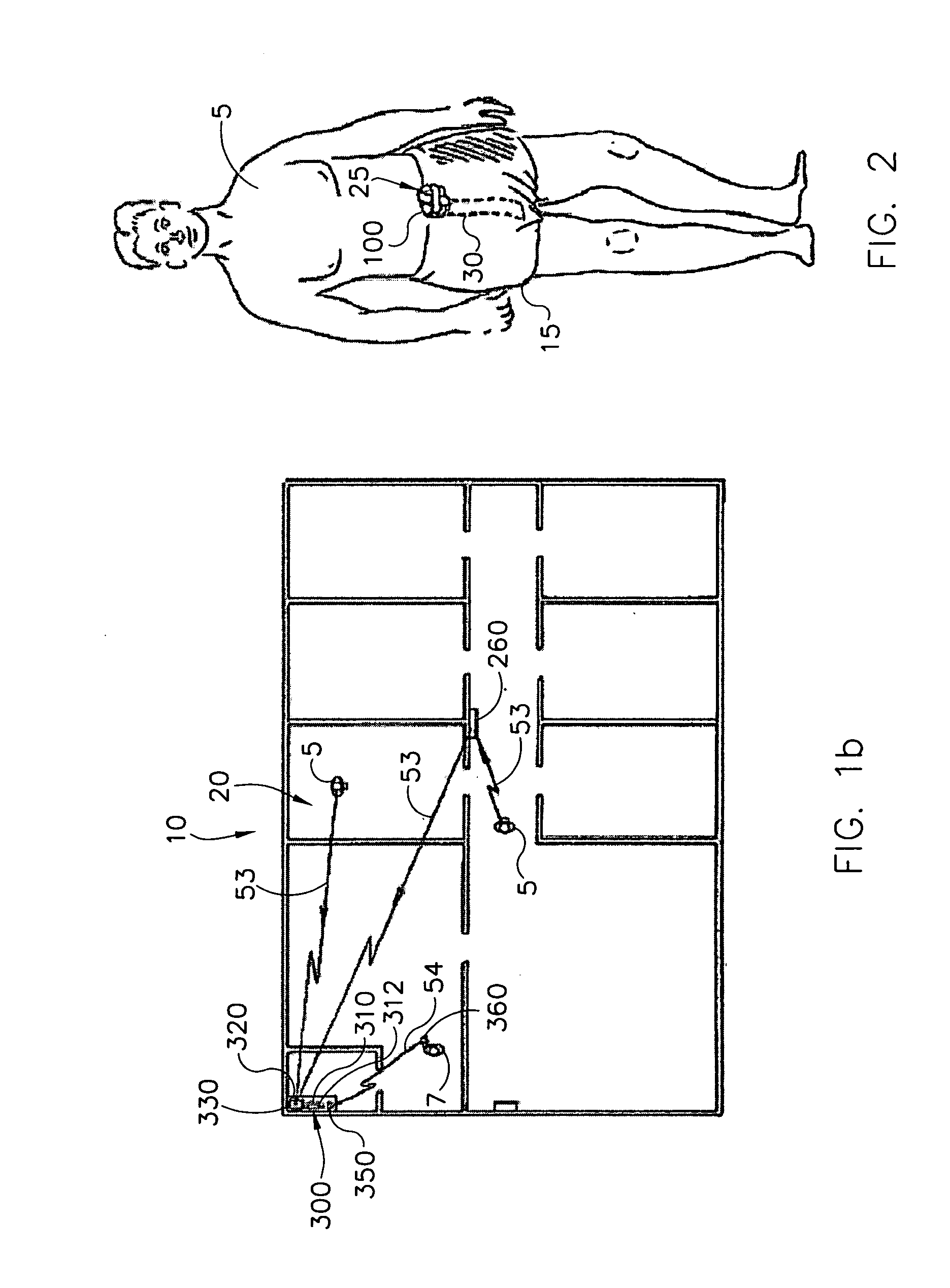Wetness monitoring system
a monitoring system and wetness technology, applied in the field of wetness monitoring system, can solve the problems of increasing difficulty, time-consuming and laborious, and prolonged sitting in wet or soiled diapers or garments, and achieve the effect of reducing the annual operating cost of the system, facilitating positioning, and reducing the operating cos
- Summary
- Abstract
- Description
- Claims
- Application Information
AI Technical Summary
Benefits of technology
Problems solved by technology
Method used
Image
Examples
Embodiment Construction
[0045]While this invention could take on a variety of different embodiments and forms, the drawings show and the specification describes a preferred embodiment. However, it should be understood that the drawings and specification are to be considered an exemplification of the principles of the invention, and are not intended to limit the broad aspects of the invention to the embodiment illustrated and discussed.
[0046]Many individuals 5 desire or need assistance from healthcare workers 7 such as nurses, nurses aids, nutritionists, cooks, doctors, etc. These individuals live in assisted living or nursing homes 10, and are frequently afflicted with bladder control problems that hinder their ability to notice when their bladder is full or exert the control needed to hold their bladder until they are able to use a bathroom. The consequence of this affliction is that the individual 5 ends up wetting his or her undergarment or diaper 15 worn around the waist and groin of the individual. Ab...
PUM
| Property | Measurement | Unit |
|---|---|---|
| length of time | aaaaa | aaaaa |
| length | aaaaa | aaaaa |
| length | aaaaa | aaaaa |
Abstract
Description
Claims
Application Information
 Login to View More
Login to View More - R&D
- Intellectual Property
- Life Sciences
- Materials
- Tech Scout
- Unparalleled Data Quality
- Higher Quality Content
- 60% Fewer Hallucinations
Browse by: Latest US Patents, China's latest patents, Technical Efficacy Thesaurus, Application Domain, Technology Topic, Popular Technical Reports.
© 2025 PatSnap. All rights reserved.Legal|Privacy policy|Modern Slavery Act Transparency Statement|Sitemap|About US| Contact US: help@patsnap.com



